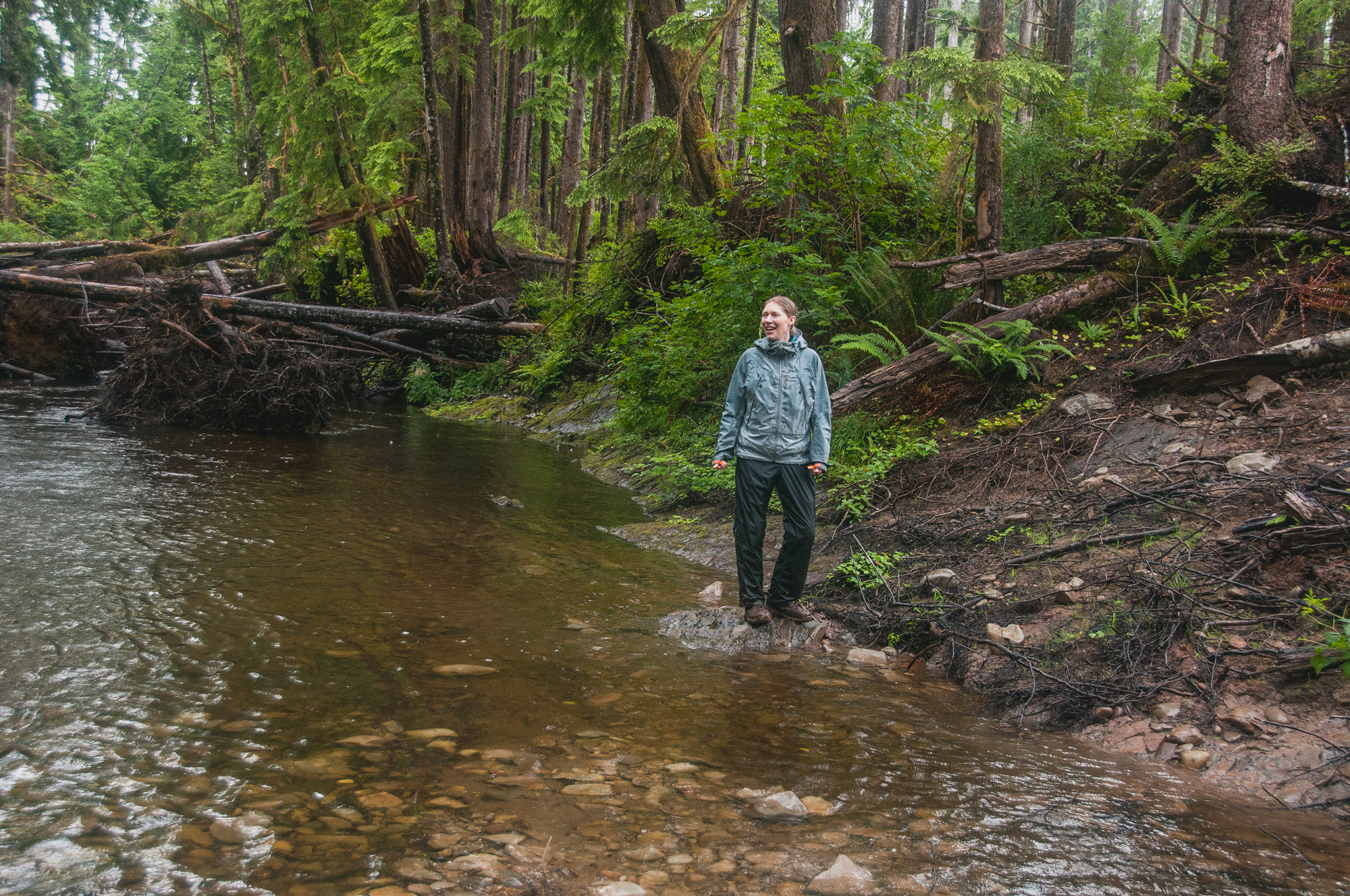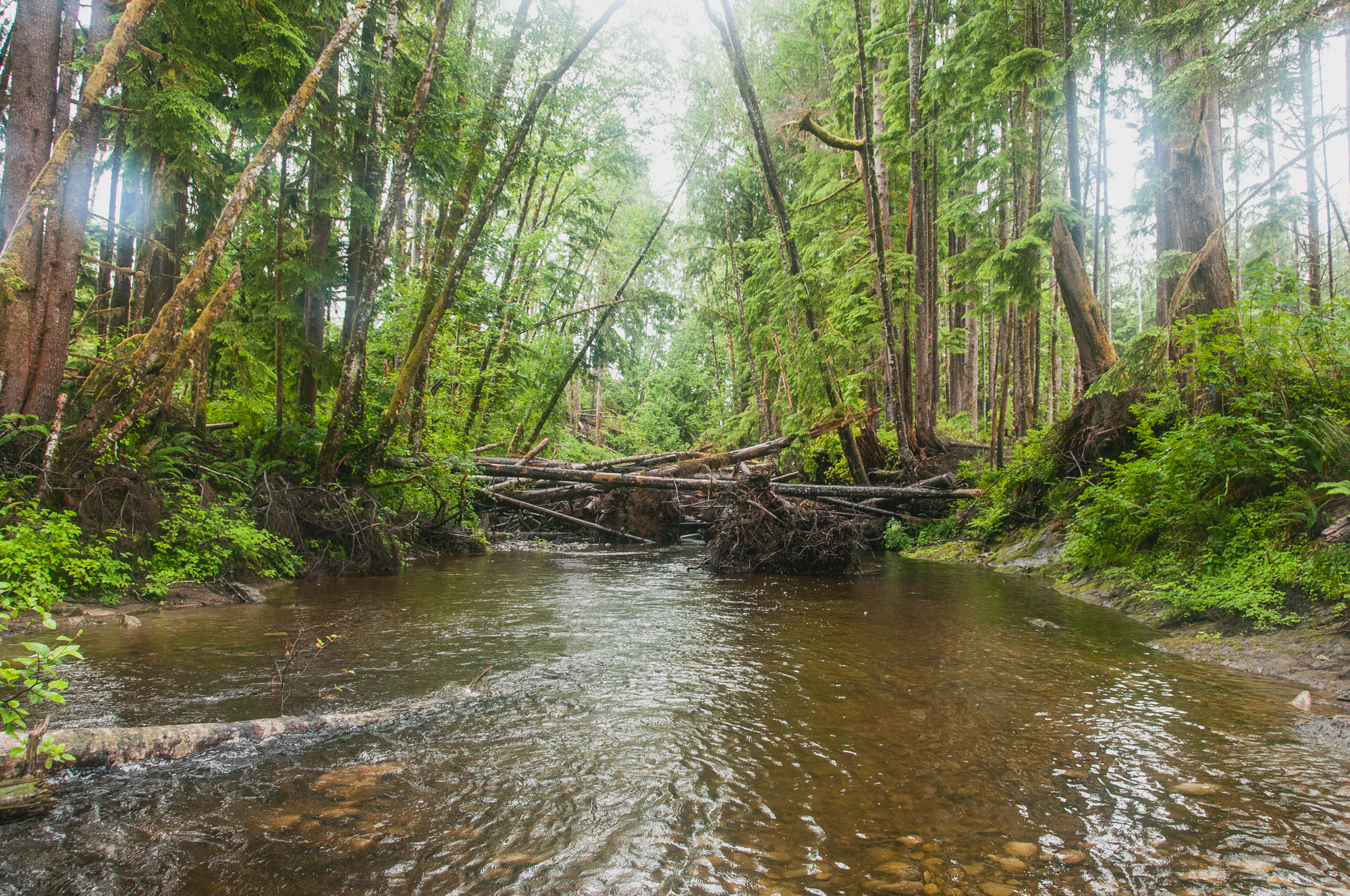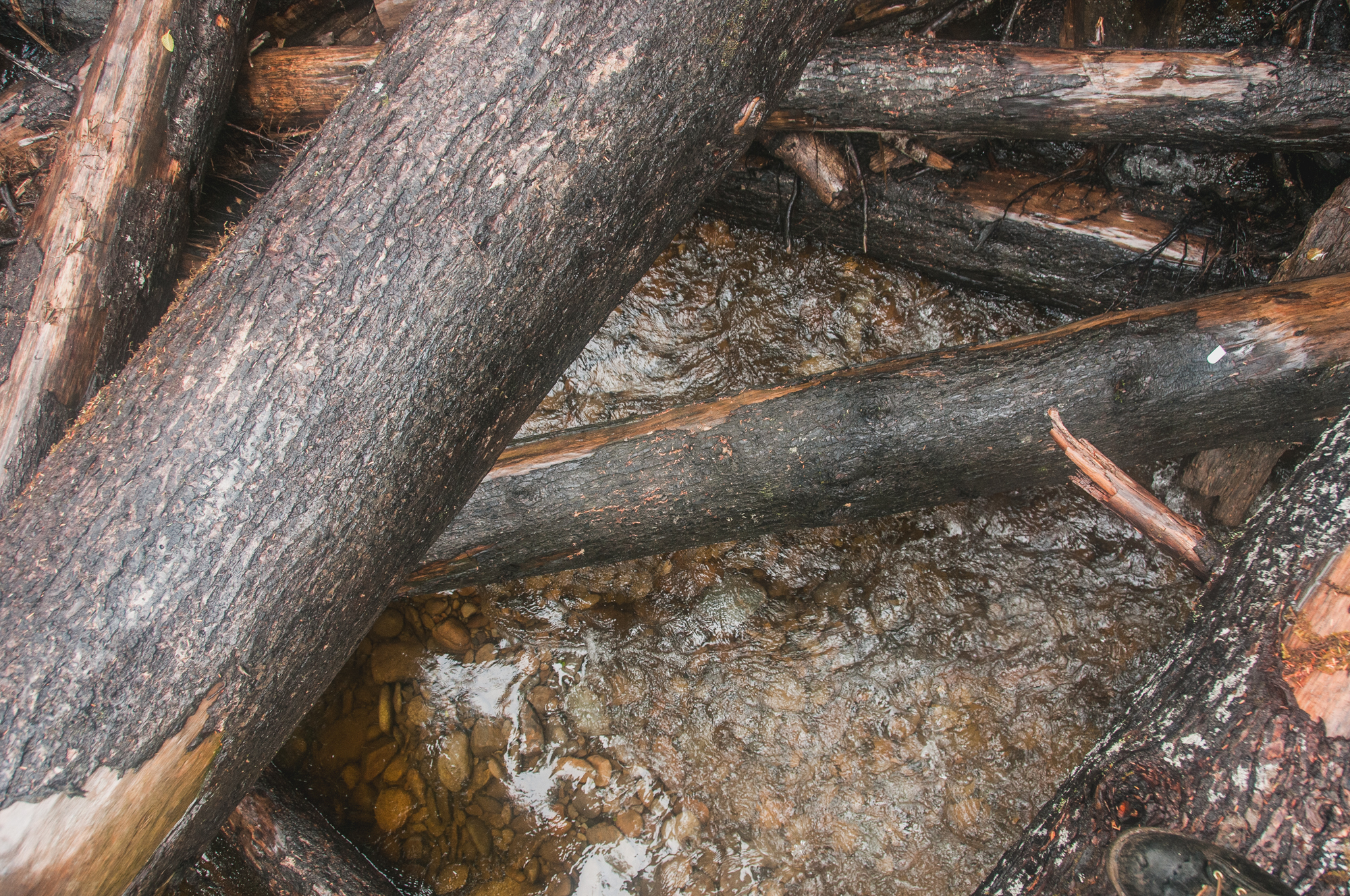Written by Emily Howe, Aquatic Ecologist
Photographed by Hannah Letinich, Volunteer Photgraphy Editor
Graphics by Erica Simek-Sloniker, Visual Communications
Boots. Any aquatic ecologist worth their salt needs a collection of boots. Rubber knee boots, lug-soled hiking boots, felt-soled stream boots, chest waders, and caulks. Caulks? Before last week, a sturdy pair of spike-soled logging boots had not made my inventory list as a fisheries biologist. Flippers, yes. Wet suit booties, sure. But generally speaking, spikes are left to those scaling glaciers or trees.
My recent trip to Washington’s coastal rainforests changed my footwear paradigm.
After a 3-day four-wheel drive tour of Ellsworth Creek, the Hoh, Quinault, and Clearwater Rivers, it is clear that active forest management goes hand in hand with salmon and river recovery. Rolling back a century of damage from industrial logging requires active logging operations to thin and replant monocultural tree plantations, decommissioning and rerouting roads, and reintroducing large wood into streams and rivers. The caulks come in handy on that last one.
You see, to enhance natural river processes critical to salmon and watershed recovery, The Conservancy and its partners are reintroducing fallen trees to streams and floodplains throughout coastal Washington, Puget Sound, and the Central Cascades. This restoration technique ranks as one of the most urgent actions needed for the recovery and future resilience of salmon because it promotes a complex portfolio of aquatic habitats. Once in the water, large wood initiates log jams that in turn increase natural scour, create new pools and deepen existing ones, provide slow-water refuge for juvenile fish, create gravel beds for nesting, trap nutrients in streams, and increase food availability.
The Conservancy’s coastal forest preserves embody the integration of terrestrial and aquatic ecosystems- right down to the boots.
























